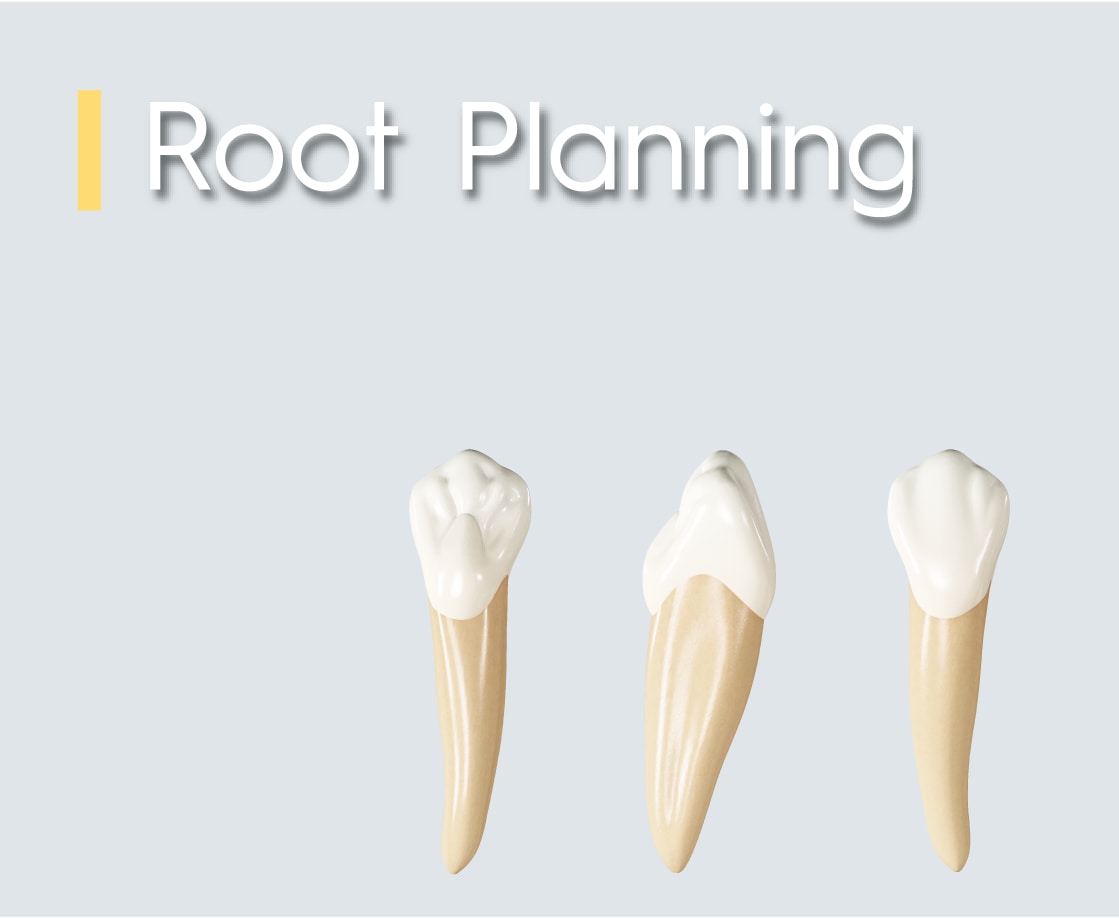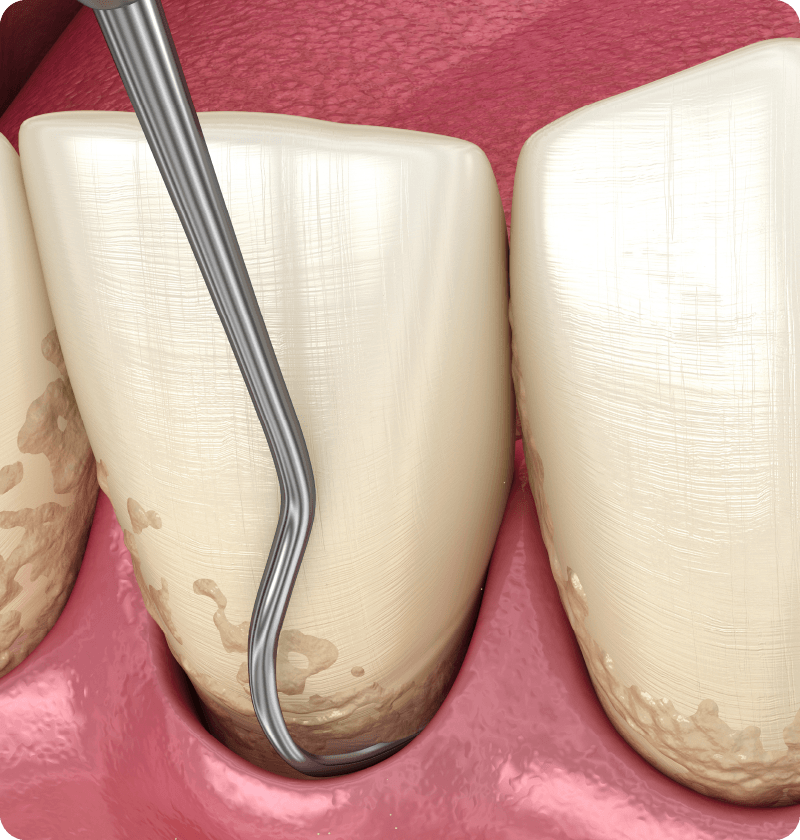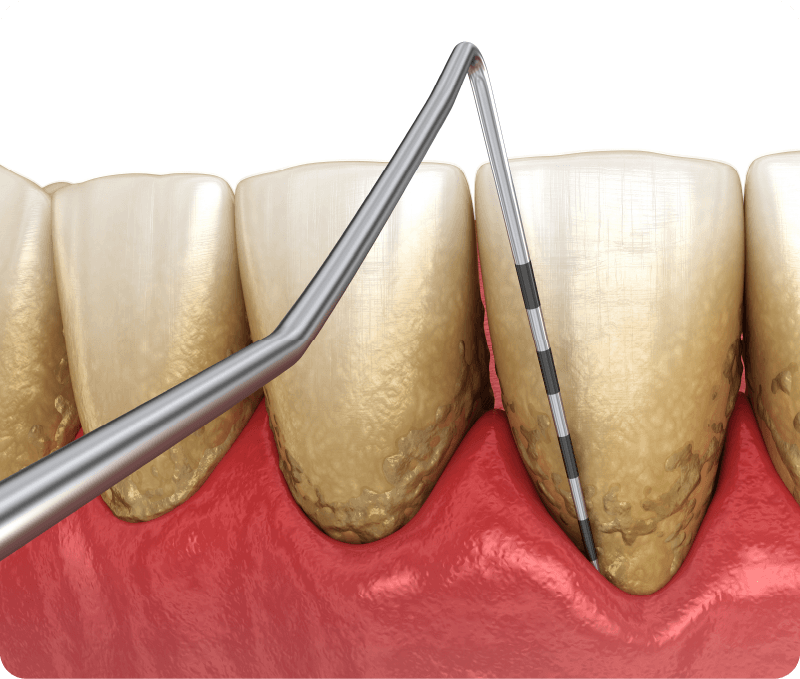

Root Planing
Root Planing is a non-surgical method of treating severe gum disease. The aim is to thoroughly remove dental plaque and tartar to control inflammation of the gums and damage to the jawbone.

Where does dental plaque come from?
The plaque is a sticky film that forms on the surface of teeth. It contains bacteria feeding on food debris adhering to the teeth and is hard to be seen with the naked eye. If the oral hygiene is poor, dental plaque will accumulate along the gingival margin. The bacteria from the dental plaque release toxins that irritate the periodontal tissues (tissues surrounding a tooth) including the gums, periodontal ligaments, jawbone, etc., leading to the development of gum disease. If the teeth are not thoroughly cleaned, some of the plaque will remain in the mouth to form tartar. The rough surface of the tartar further traps more plaque. The gum is continuously inflamed and may even develop periodontal problems such as swelling, bleeding, deep pockets (depth of the gum around a tooth), gum recession, and loss of bone around a tooth.
Root Planing

In the early stages of gum disease, the dentist will use a special instrument (such as a periodontal curette or scaler) to scrape away the plaque and tartar at and above the gum line (supragingival). Once mild periodontitis has developed, a deep scaling is required to clean and scrape the surface of the tooth below the gum line (subgingival). This method is called root planing.
Root planing is usually indicated in cases of heavy tartar build-up on the root surfaces of the teeth which led to the breakdown of the connection between the tooth and its supporting soft and hard tissues. During the treatment, the patient will be given a local anaesthetic. The dentist will use a curette or scaler to reach the subgingival region, scrape away tartar on the root surface inside the periodontal pocket and remove bacteria and inflamed tissues. After the subgingival tartar has been scraped out, root planing treatment is used to remove the infected rough and contaminated root surface to form a clean and smooth root surface.The treatment can restore the health of inner gums by allowing them to adhere to the clean and smooth root surface and recover. During the scraping process the structure of the tooth is not damaged. Great care is taken when handling the instrument with controlled force and with the direction of the scraping edge to avoid damaging the roots.
In general, non-surgical treatment can treat periodontal pockets of up to 4 mm (primary), 5 to 6 mm (intermediate) and even up to 7 mm (severe).

Once the roots have been cleaned, the gums can be reattached to the roots and the periodontal pockets can be restored to their proper depth. This type of treatment takes about one to two months to observe the gingival recovery.



 Clinic Location
Clinic Location



